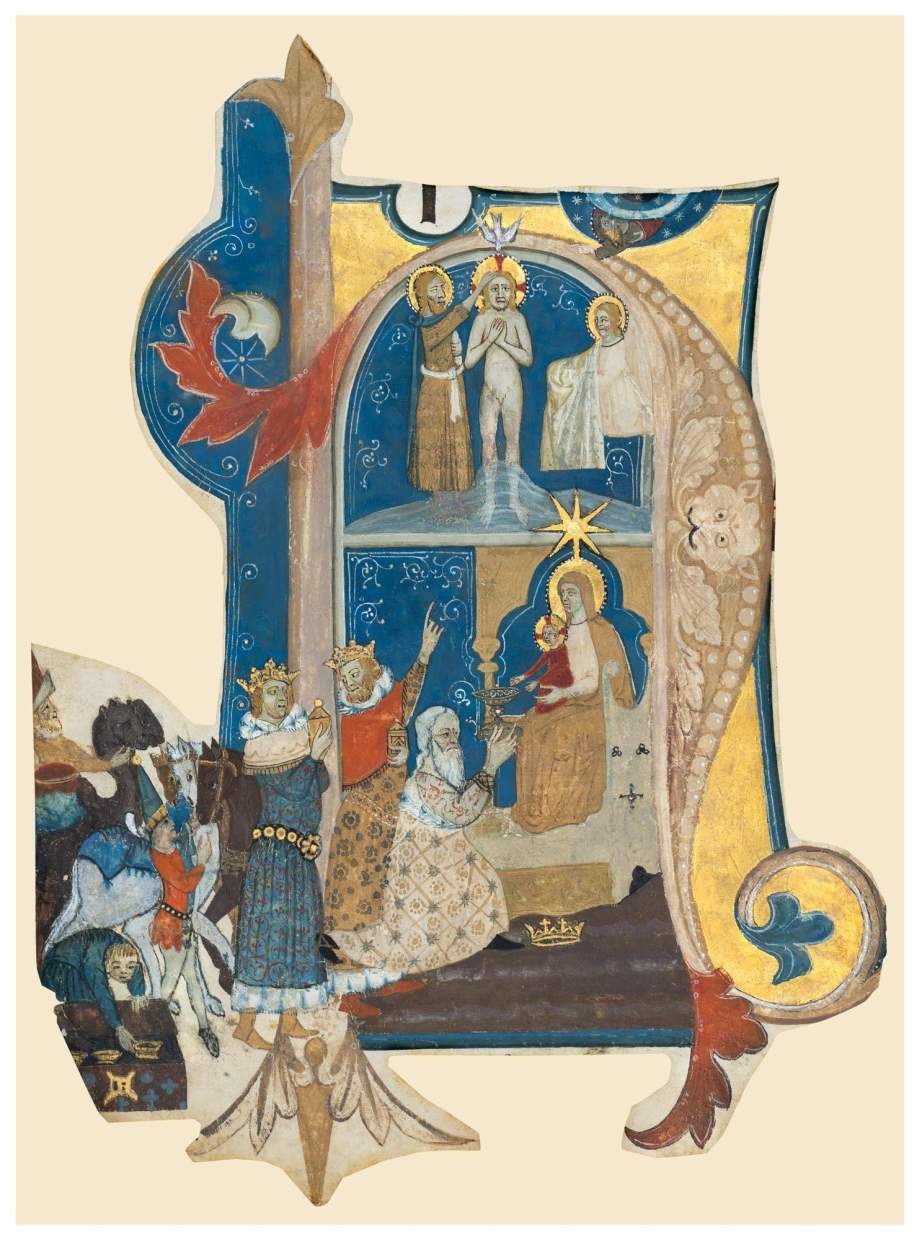

Adoration of the Magi and Baptism of Christ,
Historiated initial 'H', from an illuminated Antiphonary in Latin on vellum.
Northern Italy, (Lombardy?), mid-14th century.
Hide caption
The narrative of this complex historiated initial ‘H’ is divided into two parts. At the top part of the letter, John baptises Christ in the river Jordan while an angel assists. The Holy Spirit is portrayed against the gilded top of the letter and God the Father blesses the scene from a celestial sphere in the top right. In the lower register, the Three Magi have assembled before the enthroned Virgin and the divine Child. From the left, their entourage approaches on horses and camels.
The combination of the two scenes, Christ’s Baptism and the Adoration of the Magi, is relatively rare in the 14th century. The relationship between the events is based on an archaic conjecture - that God the Father recognised Jesus as his son only in the moment of his baptism. This theological conundrum is reflected in the complex narrative quality of our miniature.
The body of the letter ‘H’ is painted in a pale greyish rose. The curve of the letter’s arch is traced by a string of white pearls, interrupted by a lion’s head (also painted in white camaïeu) with leaves emanating from its mouth – decoration that is distinctly Renaissance in style, even if the overall air of the composition remains medieval. The artist of this outstanding composition can only be very generally localised in the northern Italy, maybe Veneto or Emilia Romagna. He (or she) shows a keen interest for textile patterns, demonstrated in the various ornate garment designs. The artist delights in portraying genre-like details, for instance the young man bending down to fetch vessels from a wooden casket, which is zealously ornamented with blue blossoms and a golden lock. The illuminator’s capacity for plausibly depicting animals is quite remarkable,
All in all, this peculiar artist presents an enigma, because the style is firmly rooted in the tradition of the early 14th century, but some of the ornamental choices, especially the above- described Renaissance decoration of the initial ‘H ‘betray later elements that make us think that this illuminator likely worked into the mid-14th century.



